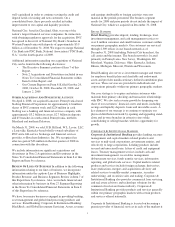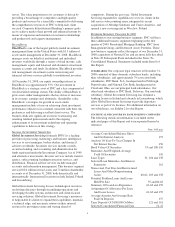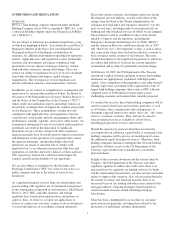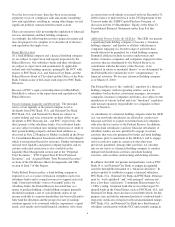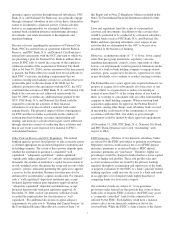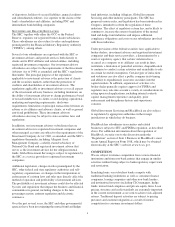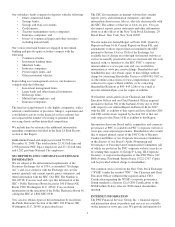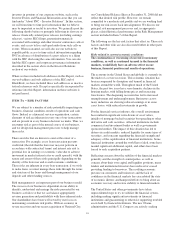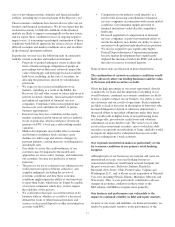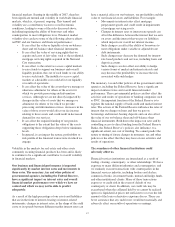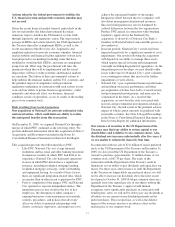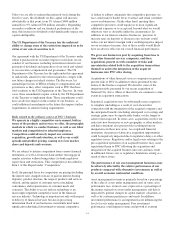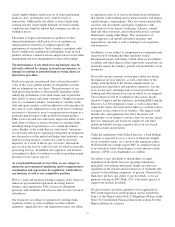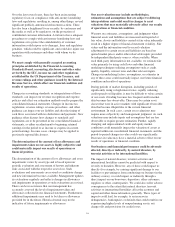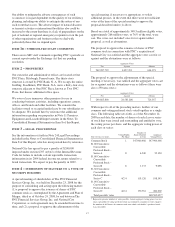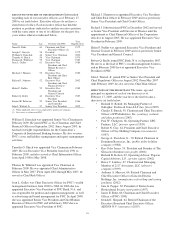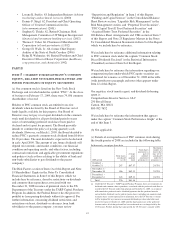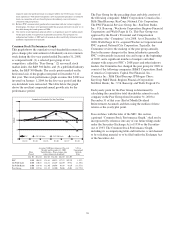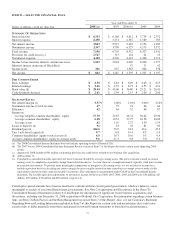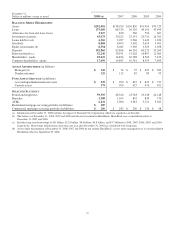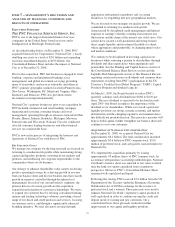PNC Bank 2008 Annual Report Download - page 17
Download and view the complete annual report
Please find page 17 of the 2008 PNC Bank annual report below. You can navigate through the pages in the report by either clicking on the pages listed below, or by using the keyword search tool below to find specific information within the annual report.
Actions taken by the federal government to stabilize the
U.S. financial system and provide economic stimulus may
not succeed.
Given the recent financial market turmoil, particularly in the
last several months, the federal government has taken
numerous steps to stabilize the US financial system, both
through legislative and regulatory action. The steps include
passage of EESA and actions taken by the US Department of
the Treasury thereafter to implement EESA, as well as the
recent enactment of the Recovery Act. Legislative and
regulatory initiatives to provide economic stimulus, financial
market stability and financial market regulatory reform have
been proposed or are pending (including some that have
modified or would modify EESA), and more are anticipated
going forward. What steps the government will take, the
manner in which they will be implemented and the actual
impact they will have on the economy and financial markets
are uncertain. The failure of these governmental actions to
help stabilize the financial markets and the U.S. economy, and
the potential impact of compliance with government
regulations undertaken in connection with such actions on our
costs and our ability to pursue business opportunities, could
materially and adversely affect our business, financial
condition, results of operations, access to credit, or the trading
price of our common stock.
Risks resulting from recent transactions
Our acquisition of National City presents substantial risks
and uncertainties, which could limit our ability to realize
the anticipated benefits from this transaction.
On December 31, 2008, we acquired National City through a
merger in which PNC continued as the surviving entity. We
provide additional information about this acquisition in Note 2
Acquisitions and Divestitures included in the Notes To
Consolidated Financial Statements in Item 8 of this Report.
This acquisition presents the following risks to PNC:
• Like PNC, National City was a large financial
institution and has retail and other banking operations
in numerous markets in which PNC had little or no
experience. National City also had major operations
in areas in which PNC did not have a significant
presence, including residential mortgage lending,
residential mortgage servicing, credit card lending
and equipment leasing. As a result of these factors,
there are significant integration-related risks, which
are greater than in other recent acquisitions by PNC.
• Prior to completion of the merger, PNC and National
City operated as separate independent entities. The
integration process may result in the loss of key
employees, the disruption of either company’s
ongoing businesses or inconsistencies in standards,
controls, procedures, and policies that adversely
affect our ability to maintain relationships with
clients, customers, depositors, and employees or to
achieve the anticipated benefits of the merger.
Integration efforts between the two companies will
also divert management attention and resources.
Successful integration may also be hampered by
cultural differences between the two organizations.
Further, PNC agreed, in connection with obtaining
regulatory approvals for the National City
acquisition, to divest 61 of National City Bank’s
branches in Western Pennsylvania and this process is
also underway.
• In recent periods, National City’s results had been
impacted negatively by a significant amount of asset
impairments. Our results following the acquisition
will depend on our ability to manage these assets,
which require special servicing and management
oversight, including disposition if appropriate. As the
integration process develops, we may identify other
issues with respect to National City’s asset valuation
or accounting procedures that may lead to further
impairments or write-downs.
• National City’s pre-acquisition financial performance
and resulting stock price performance and other
pre-acquisition activities have led to several lawsuits
and governmental investigations, and more may be
commenced in the future. As a result of this
acquisition, we now bear the risks associated with
lawsuits and governmental investigations relating to
National City, the full extent of the potential adverse
impact of which cannot currently be predicted with
reasonable certainty. See Note 24 Legal Proceedings
in the Notes to Consolidated Financial Statements in
Item 8 of this Report for additional information.
Our issuance of securities to the US Department of the
Treasury may limit our ability to return capital to our
shareholders and is dilutive to our common shares. Also,
the dividend rate increases substantially after five years if
we are unable to redeem the shares by that time.
In connection with our sale of $7.6 billion of senior preferred
stock to the US Department of the Treasury on December 31,
2008, we also issued the US Department of the Treasury a
warrant to purchase approximately 17 million shares of our
common stock at $67.33 per share. The terms of the
transaction with the Department of the Treasury result in
limitations on our ability to pay dividends and repurchase our
shares. For three years after issuance or until the Department
of the Treasury no longer holds any preferred shares, we will
not be able to increase our dividends above the most recent
level prior to October 14, 2008 ($.66 per common share on a
quarterly basis) nor repurchase any of our shares without the
Department of the Treasury’s approval with limited
exceptions, most significantly purchases in connection with
benefit plans. Also, we will not be able to pay any dividends at
all unless we are current on our dividend payments on the
preferred shares. These restrictions, as well as the dilutive
impact of the warrant, may have an adverse effect on the
market price of our common stock.
13


